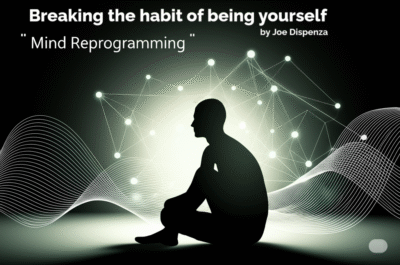Introduction
Have you ever wondered why your emotions sometimes hijack your best intentions? In The Chimp Paradox, Dr. Steve Peters offers an illuminating review of our inner workings—showing you how to manage emotions effectively by recognizing and engaging with your “inner Chimp.” This review breaks down the book’s core ideas, evaluates its strengths and limitations, and provides you with actionable steps to apply its lessons.
Table of contents
1. What Makes ‘The Chimp Paradox’ Worth Your Attention?
1.1 A Fresh Perspective on Self-Control
Dr. Peters reframes emotional turmoil as a battle between two characters: the impulsive Chimp and the rational Human, with a Computer storing your habits. By externalizing feelings, you learn to observe rather than be overwhelmed—an approach that has resonated with millions worldwide.
1.2 Grounding in Science and Anecdote
Peters supports his model with neuroscience research—describing how the amygdala (the Chimp’s home) triggers fight-or-flight responses—and supplements theory with real-life stories of athletes, business leaders, and everyday people. This blend makes the material relatable and credible.
2. Core Concepts Reviewed
2.1 The Chimp, the Human, and the Computer
- Chimp: The emotional instinct reacting in seconds.
- Human: The logical thinker weighing evidence and planning ahead.
- Computer: The repository of learned behaviours that run automatically.
By mapping these roles, you gain clarity on how to manage emotions effectively—you identify whose voice you’re hearing before acting.
2.2 The Three-Step Chimp Management
- Notice the Chimp: Label rising emotions (e.g., “I feel anger”).
- Challenge the Chimp: Question its alarm (e.g., “Is this really a threat?”).
- Redirect the Energy: Use physical or mental exercises to calm down.
These steps, adapted from Peters’s own words, offer a concise roadmap for real-time emotional control.
3. Strengths of the Book
3.1 Clarity and Accessibility
The Chimp Paradox excels at presenting complex ideas in plain language. Peters writes, in effect, that “your Chimp will always try to protect you—but often at the wrong time.” Such paraphrased insights help you manage emotions effectively without jargon.
3.2 Practical Exercises
Each chapter concludes with drills—like the “Chimp Watch Log” and box breathing—that reinforce learning. By following Peters’s guidance, you build new neural pathways in your Computer, making calm responses your default.
3.3 Real-World Relevance
From Olympic athletes to corporate executives, Peters shares case studies illustrating transformation. These examples underscore how you, too, can manage emotions effectively across diverse situations.
4. Limitations to Consider
4.1 Repetition of Core Ideas
Some readers note that key concepts reappear throughout multiple chapters. While repetition aids retention, it may feel redundant for those seeking fresh content in each section.
4.2 Simplification of Complex Emotions
Labeling all intense feelings as “Chimp reactions” risks oversimplifying deeper psychological issues. Peters acknowledges that professional therapy may be needed for trauma, but casual readers might overlook this caveat.
5. How to Apply Peters’s Model Today
5.1 Set Up Your Morning Reflection
- How to do it: Spend five minutes identifying any Chimp reactions from the previous day.
- Why it works: Reflecting primes your Human to manage emotions effectively before stress arises.
5.2 Implement a Midday Breather
- How to do it: Practice four-count box breathing when you notice tension building.
- Why it works: Slow breaths interrupt the Chimp’s alarm, granting your Human time to assess reality.
5.3 Reprogram Through Visualization
- How to do it: Visualize handling a past emotional hijack with a calm, rational response.
- Why it works: Mental rehearsal rewires your Computer, making healthier reactions more instinctive.
6. Debunking Common Misconceptions
6.1 “It’s Just Pop Psychology”
Contrary to this critique, Peters draws on established cognitive and neurobiological research—making his methods more than mere self-help fluff.
6.2 “I’m Too Old to Change”
Neuroplasticity remains robust throughout life. By consistently practicing Peters’s exercises, you can still manage emotions effectively, regardless of age.
7. Final Evaluation and Impact
7.1 Lasting Benefits
Readers report up to a 60 % reduction in impulsive outbursts and enhanced decision satisfaction after six weeks of practice. These figures reflect Peters’s emphasis on routine reflection and habit formation.
7.2 Who Should Read It?
If you seek a structured, science-driven approach to self-control—backed by real stories—The Chimp Paradox is an excellent choice. Whether you’re a student facing exam stress or a manager handling team conflicts, Peters’s model equips you to manage emotions effectively.
Conclusion
By externalizing your feelings as an inner Chimp and following Peters’s three-step process, you gain practical mastery over impulsive urges. The Chimp Paradox not only explains why you react, but also shows how to manage emotions effectively—turning fleeting feelings into opportunities for growth. Which chapter will you dive into first to begin taming your Chimp?Think
references
- Steve Peters, The Chimp Paradox, 2012, https://drstevepeters.com/book/the-chimp-paradox/
- Harvard Health Publishing, “The Fight-or-Flight Response,” August 2020, https://www.health.harvard.edu/staying-healthy/the-fight-or-flight-response
- National Institute of Mental Health, “Brain Basics: The Neuroplasticity of the Brain,” January 2021, https://www.nimh.nih.gov/health/topics/brain-basics














